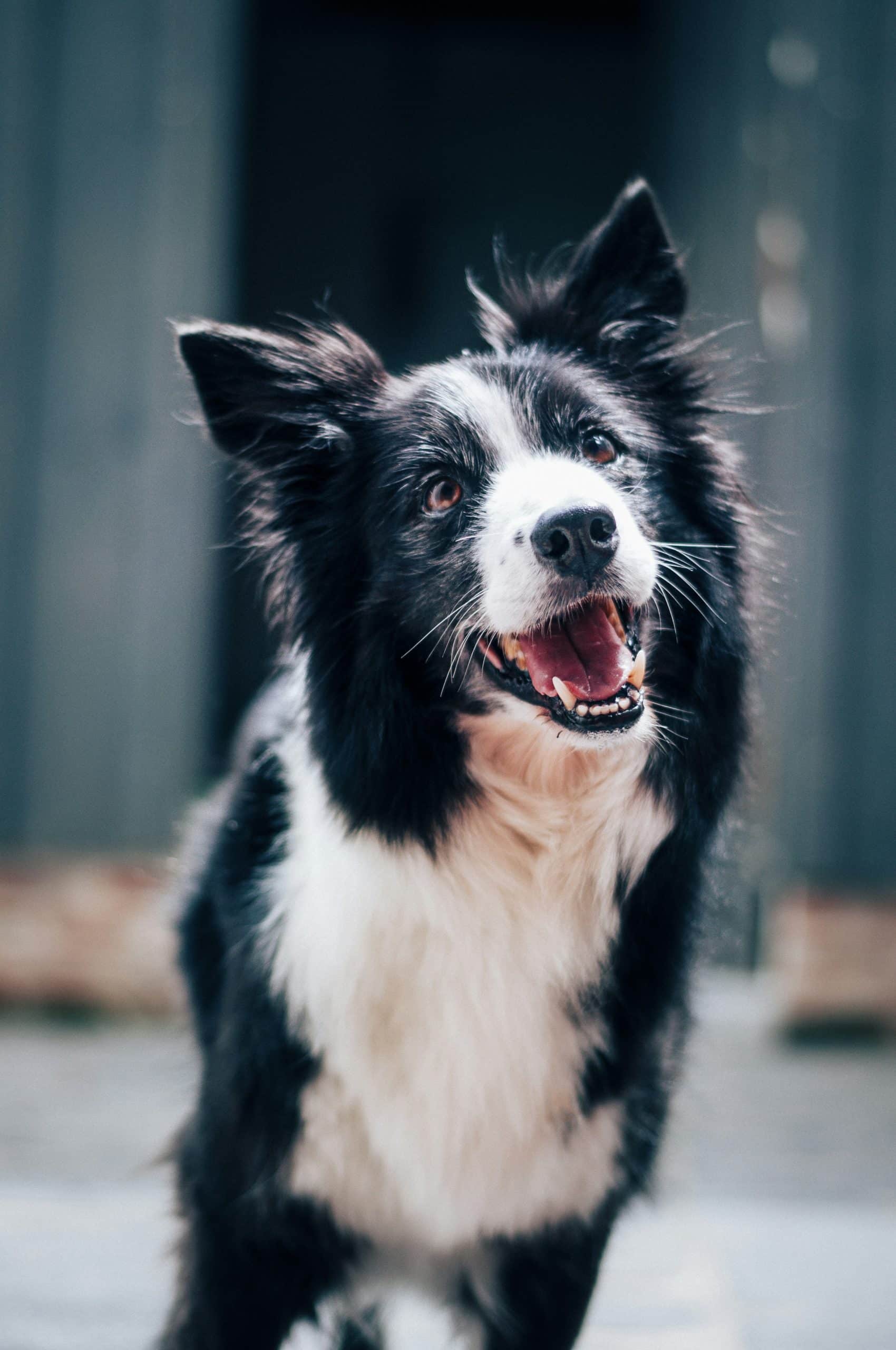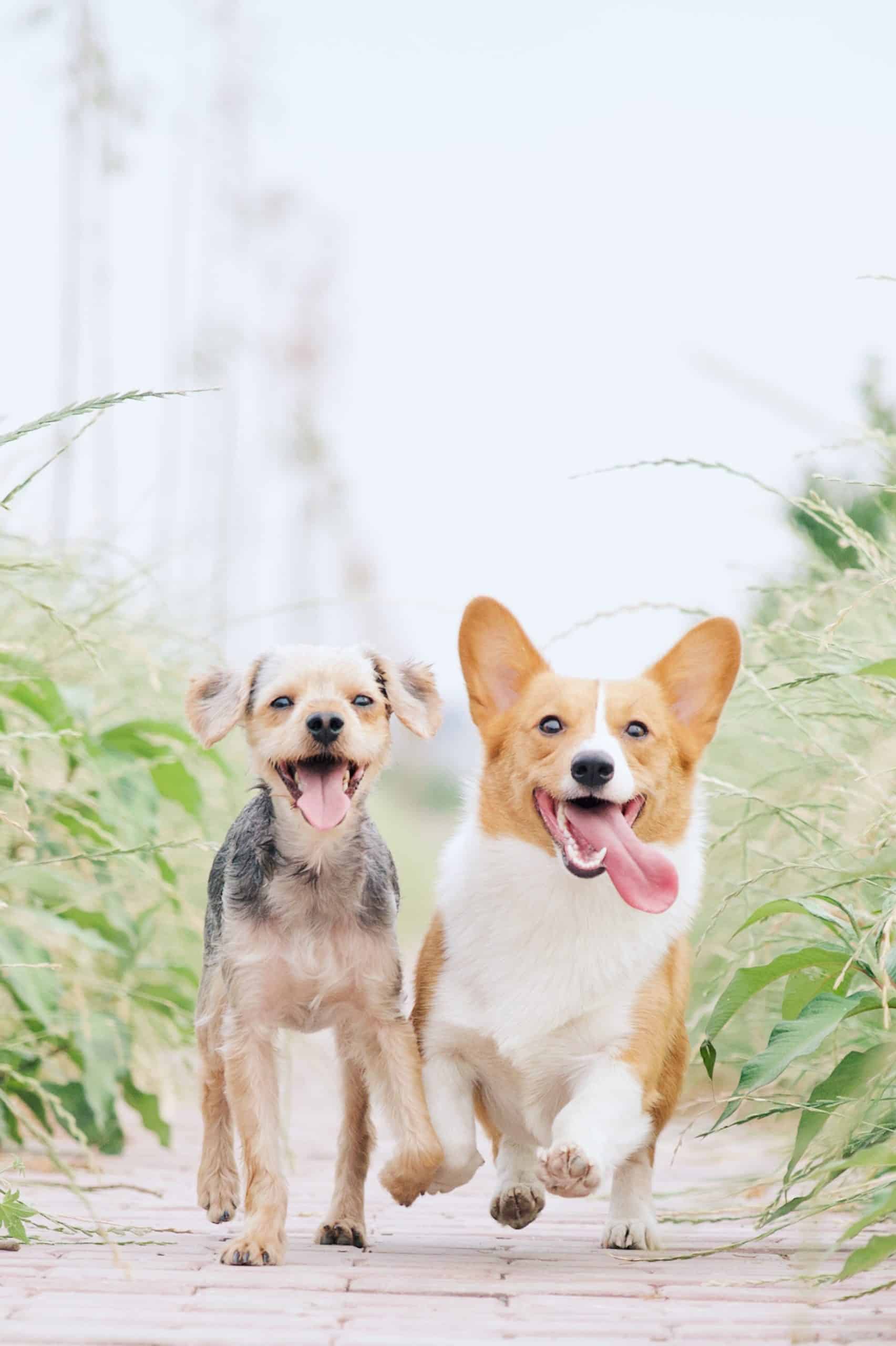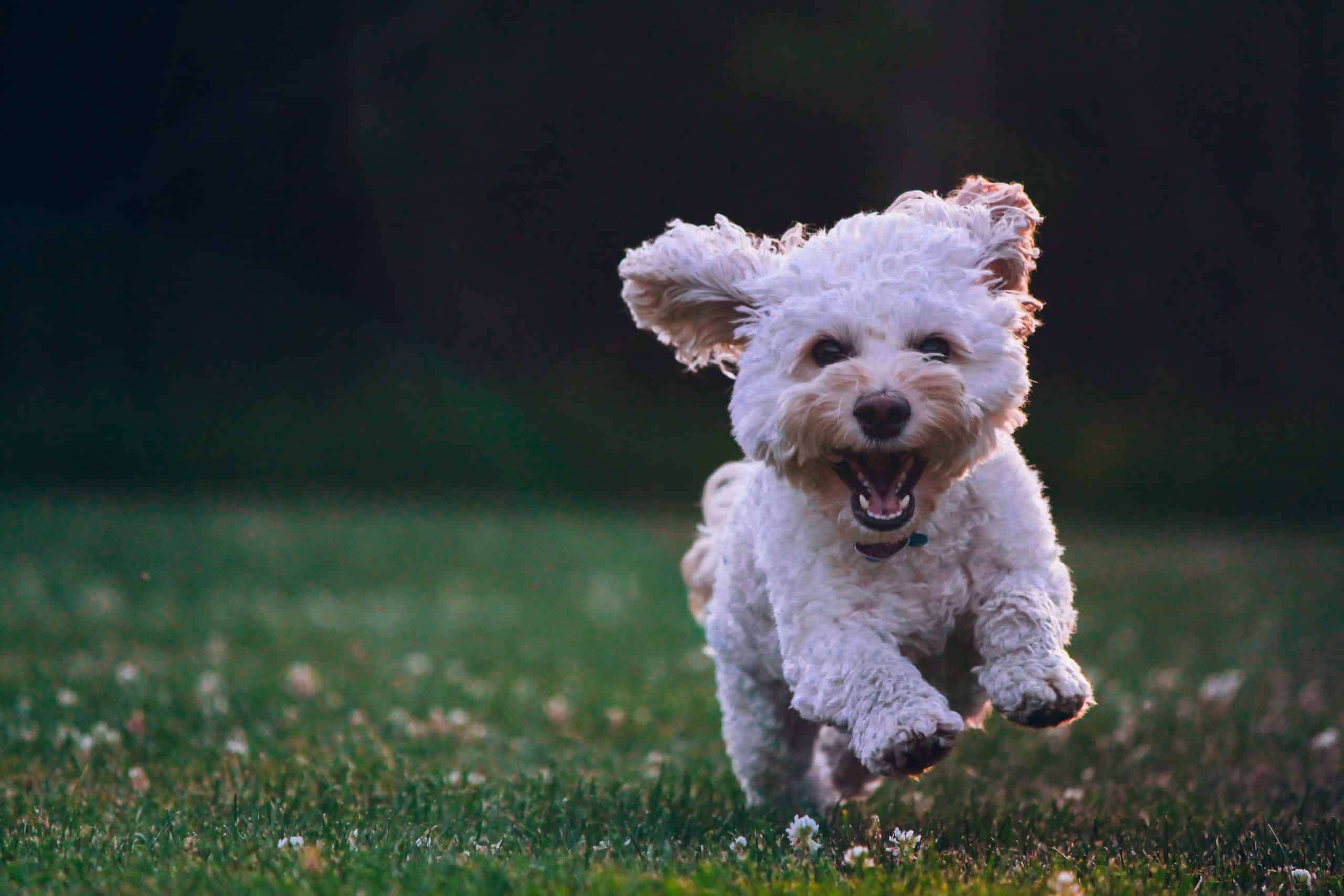If you've ever considered bringing a furry friend into your home, then you know that integrating them into your lifestyle requires careful consideration and adjustments. Whether you're a first-time dog owner or looking to add another four-legged companion to your family, adapting your lifestyle is key to providing a happy and fulfilling life for both you and your new canine companion. From creating a dog-friendly space to establishing routines and finding the right balance between work and play, this article will provide you with practical tips to seamlessly incorporate a dog into your daily life.

This image is property of images.unsplash.com.
Preparing Your Home
Ensure a Safe Environment
Before bringing a dog into your home, it's important to ensure that you have a safe environment for them. This means evaluating your living space for any potential hazards or dangers. Look for poisonous plants, toxic chemicals, and small objects that could be choking hazards. Secure electrical cords and ensure that any potentially harmful substances are stored out of your dog's reach. Taking these precautions will help keep your furry friend safe and out of harm's way.
Create a Dog-Friendly Space
Creating a designated area that is specifically for your dog will make them feel more comfortable and welcome in your home. This could be a cozy corner with a dog bed or a designated room where their toys, water bowl, and bed are all located. Having a space that is solely for your dog ensures that they have a place they can retreat to when they need some quiet time or a nap.
Secure Hazardous Items
In addition to creating a dog-friendly space, it's crucial to secure hazardous items in your home. Anything that could be harmful if ingested, such as cleaning supplies, medications, and toxic foods, should be stored in a secure location where your dog cannot access them. This will help prevent accidental poisonings and keep your furry friend safe and healthy.
Set Up Sleeping and Feeding Areas
Setting up a designated sleeping area and feeding station will help establish a routine for your dog. Choose a quiet, comfortable spot for their bed where they can rest undisturbed. When it comes to feeding, designate a specific area for their bowls and make sure they have access to fresh water at all times. By creating these dedicated areas, you'll provide structure and predictability for your dog, which can contribute to a sense of security and stability in their new home.
Establishing a Routine
Design a Daily Schedule
Dogs thrive on routine, so it's important to establish a daily schedule that includes regular feeding times, exercise, and training sessions. Consider your own schedule and what times work best for you and your dog. Aim for consistency in meal times, walks, and playtime, as this will help your dog feel more secure and adapt to their new routine more quickly. A well-structured schedule will also make it easier for you to plan your day around your dog's needs.
Allocate Time for Exercise
Exercise is essential for a happy and healthy dog. Different breeds have different exercise requirements, so it's important to consider your dog's breed and energy level when planning their exercise routine. Some dogs may require daily runs or long walks, while others may be content with shorter play sessions. No matter the breed, all dogs benefit from regular exercise to burn off energy and stimulate their minds. Allocating time each day for physical activity will help keep your dog engaged and prevent behavioral issues due to pent-up energy.
Decide on Meal Times
Feeding your dog at consistent times each day helps establish a routine and prevents overeating. It's important to determine the appropriate portion size and choose a high-quality dog food that meets your dog's nutritional needs. Consult with your veterinarian to ensure you're providing the right diet for your furry friend. By establishing regular meal times, your dog will come to expect and look forward to their meals, and this will aid in the digestion process as well.
Implement Training Sessions
Training is not only an opportunity to teach your dog new commands and tricks but also a way to establish boundaries and reinforce positive behaviors. Set aside time each day for training sessions, using positive reinforcement techniques such as treats and praise. Consistency is key when it comes to training, so make sure to practice regularly and be patient with your dog. By implementing training sessions into your daily routine, you will strengthen the bond between you and your furry friend while also promoting good behavior.
Making Time for Exercise
Types of Exercise for Dogs
There are various ways to provide exercise for your dog, depending on their individual needs and abilities. Some dogs enjoy a daily walk or run, while others may prefer playing fetch or engaging in interactive games. Swimming is also an excellent exercise option for many dogs, as it is easy on their joints and provides a full-body workout. It's essential to find activities that your dog enjoys and that cater to their specific exercise needs.
Consider Your Dog's Breed and Energy Level
When determining the appropriate exercise for your dog, it's important to consider their breed and energy level. Some breeds require more exercise than others, while certain dogs may have physical limitations that need to be taken into account. High-energy breeds, such as Border Collies or Siberian Huskies, will require more intense and regular exercise compared to low-energy breeds like Bulldogs or Basset Hounds. Understanding your dog's specific needs will help ensure that they receive the appropriate amount and type of exercise.
Engage in Physical Activities Together
One of the best ways to strengthen the bond with your dog while also providing exercise is by engaging in physical activities together. This could include playing fetch at the park, going for hikes or jogs, or even participating in dog-friendly sports such as agility or flyball. Not only will your dog enjoy the physical exercise, but they will also appreciate the quality time spent with you. Engaging in activities as a team will also promote better communication and understanding between you and your furry friend.
Utilize Dog Parks and Off-Leash Areas
Dog parks and off-leash areas are excellent resources for providing exercise and socialization opportunities for your dog. These spaces allow your dog to run, play, and interact with other dogs, which is essential for their mental and physical well-being. It's important to ensure that your dog is properly trained and socialized before introducing them to off-leash areas. Always supervise your dog and be mindful of their behavior to ensure a safe and enjoyable experience for everyone.
Providing Mental Stimulation
Offer Interactive Toys and Puzzle Games
In addition to physical exercise, dogs also require mental stimulation to stay happy and engaged. Interactive toys and puzzle games are a great way to provide mental stimulation and keep your dog's brain active. These toys and games can challenge your dog's problem-solving skills and provide hours of entertainment. Look for toys that dispense treats or require your dog to figure out how to access hidden rewards. By providing mental stimulation, you will help prevent boredom and potentially destructive behaviors.
Rotate Toys to Prevent Boredom
To keep your dog interested and prevent toy fatigue, it's important to rotate their toys regularly. This means offering a variety of different toys and switching them out every few days. By rotating toys, you can keep your dog engaged and excited about playtime. Additionally, this prevents them from becoming bored with the same toys and potentially resorting to chewing on household items out of frustration or boredom.
Teach New Tricks and Commands
Training your dog to learn new tricks and commands is not only mentally stimulating but also strengthens the bond between you and your furry friend. Spend time each day teaching your dog new skills, whether it's basic commands like sit and stay or more advanced tricks like roll over or play dead. Use positive reinforcement techniques such as treats and praise to encourage your dog's learning process. The mental challenge of learning new commands will keep your dog engaged and mentally sharp.
Explore Outings and New Environments
Introducing your dog to new environments and experiences is an excellent way to provide mental stimulation. Take your dog on outings to different places such as parks, trails, or pet-friendly stores. Allow them to experience new smells, sights, and sounds. This not only stimulates their senses but also exposes them to different social situations, helping to build their confidence. Exploring new environments is a great way to keep your dog mentally stimulated and prevent them from becoming bored.

This image is property of images.unsplash.com.
Ensuring Proper Nutrition
Choose a High-Quality Dog Food
Proper nutrition is essential for your dog's overall health and well-being. When selecting a dog food, look for high-quality options that are specially formulated for your dog's age, size, and breed. Avoid foods that contain fillers or artificial ingredients. Consult with your veterinarian for recommendations on the best type of food for your furry friend. Providing a balanced and nutritious diet will support your dog's immune system, improve their coat and skin health, and give them the energy they need for their daily activities.
Determine the Right Portion Size
Feeding your dog the appropriate portion size is crucial for maintaining a healthy weight. Obesity can lead to a variety of health issues, so it's important to ensure that you are not overfeeding your dog. The correct portion size will depend on factors such as your dog's age, size, activity level, and metabolism. Your veterinarian can provide guidance on determining the right portion size based on your dog's individual needs. Measuring out the correct amount of food will help prevent overeating and promote a healthy weight.
Establish a Feeding Schedule
Establishing a consistent feeding schedule is important for your dog's digestive system and overall routine. Try to feed your dog at the same times each day, so they know when to expect their meals. Avoid free-feeding, where food is left out all day, as this can lead to overeating and weight gain. Instead, feed your dog their allotted portion size at designated meal times. A consistent feeding schedule also helps with housebreaking and can improve your dog's overall behavior.
Monitor Your Dog's Weight
Regularly monitoring your dog's weight is essential for their overall health. Overweight or underweight dogs may be at risk for various health issues. Keep track of your dog's weight and body condition by regularly weighing them or using a body condition scoring system. Consult with your veterinarian if you notice any significant weight changes or if you have concerns about your dog's weight. Maintaining a healthy weight is crucial for your dog's well-being and can contribute to a longer and happier life.
Maintaining Regular Vet Check-ups
Find a Trusted Veterinarian
Finding a trusted veterinarian is essential for your dog's health and well-being. Take the time to research and find a veterinarian who is knowledgeable, experienced, and has good reviews. It's important to feel comfortable discussing your dog's health concerns and trusting the advice and recommendations given by your veterinarian. Regular vet check-ups are crucial for preventive care and early detection of any health issues.
Schedule Vaccinations and Preventive Care
Vaccinations and preventive care are essential for keeping your dog healthy and protected against common diseases. Make sure to schedule regular vaccinations as recommended by your veterinarian. These vaccinations can prevent serious illnesses such as rabies, distemper, and parvovirus. Additionally, discuss preventive care options such as flea and tick prevention, heartworm medication, and regular deworming. By staying up to date on vaccinations and preventive care, you're taking proactive steps to keep your furry friend happy and healthy.
Monitor and Treat Health Issues
Be vigilant in monitoring your dog's health and behavior for any signs of illness or discomfort. Look out for changes in appetite, energy level, bowel movements, and any signs of pain or distress. Regularly check your dog's ears, teeth, and coat for any abnormalities. If you notice any unusual symptoms or behaviors, contact your veterinarian for guidance and schedule an appointment if necessary. Early detection and treatment of health issues can often lead to better outcomes and a faster recovery.
Stay Updated on Grooming Needs
Grooming is an important aspect of your dog's overall care. Regular grooming not only keeps your dog looking and smelling fresh but also helps maintain their health. Different breeds have different grooming needs, so it's important to understand what is required for your specific dog. This may include regular brushing, baths, nail trims, ear cleaning, and dental care. Establishing a grooming routine helps keep your dog healthy and can prevent skin issues, matting, and dental problems.

This image is property of images.unsplash.com.
Socializing Your Dog
Expose Your Dog to Different People and Animals
Socializing your dog from an early age is crucial for their overall well-being. Expose your dog to different people, including different ages and genders. Allow them to interact with other animals in a controlled and safe environment. This exposure helps your dog develop positive associations with new experiences and prevents them from becoming fearful or aggressive towards strangers or other animals. A well-socialized dog is more confident, adaptable, and friendly.
Enroll in Training Classes or Workshops
Training classes or workshops are not only an opportunity to teach your dog new skills but also a great way to socialize them with other dogs and people. Look for reputable training programs in your area and enroll your dog in basic obedience classes or specialized workshops. These classes provide structured training environments where your dog can learn to follow commands, interact appropriately with others, and build their confidence. Training classes also offer valuable guidance and support for pet parents.
Plan Doggie Playdates
Setting up playdates with other dog owners is a wonderful way to promote positive social interactions for your furry friend. Find other dog owners in your community who are interested in socializing their dogs and arrange regular playdates. Supervise the play sessions to ensure that the dogs are interacting safely and positively. These playdates allow your dog to learn appropriate play behaviors, practice their social skills, and enjoy the company of other dogs.
Promote Positive Experiences
When socializing your dog, it's important to promote positive experiences. This means exposing them to new environments and situations in a gradual and positive manner. Start with low-stress situations and gradually expose your dog to more challenging scenarios. Reward them with treats and praise for calm and positive behavior. By promoting positive experiences, you'll help your dog become more confident and comfortable in various social settings.
Handling Separation Anxiety
Gradually Increase Alone Time
Separation anxiety is a common issue for many dogs, but there are strategies you can use to help ease their anxiety. Gradually increase the amount of time your dog spends alone by starting with short periods and gradually extending them. This will help your dog become more accustomed to being alone and reduce their anxiety when you have to leave. Use positive reinforcement by providing treats and praise when your dog remains calm during these alone periods.
Create a Comfortable Safe Space
When leaving your dog alone, create a comfortable and safe space for them to retreat to. This could be a crate, a specific room, or a comfortable corner with their bed and toys. Make sure the space is secure and free of any hazards. Leave comforting items such as their favorite toys or a blanket with your scent to provide familiarity and reassurance.
Use Toys and Treats for Distraction
To distract your dog from their separation anxiety, provide interactive toys or treat-filled puzzle toys. These toys can keep your dog mentally stimulated and occupied during your absence. Kong toys filled with frozen peanut butter or puzzle toys that dispense treats can be effective in keeping your dog engaged and distracted from their anxiety. Be sure to monitor your dog's behavior with these toys to ensure their safety.
Consider Professional Help if Needed
If your dog's separation anxiety is severe or persists despite your efforts, it may be necessary to seek professional help from a dog behaviorist or trainer. These professionals can help identify the underlying causes of your dog's anxiety and develop a tailored behavior modification plan. They can provide guidance and support in implementing strategies to alleviate your dog's separation anxiety. Remember, there is no shame in seeking professional help when it comes to your dog's well-being.
Establishing Boundaries and Rules
Teach Basic Commands and Behaviors
Establishing boundaries and teaching your dog basic commands is essential for their safety and well-being. Teach commands such as sit, stay, come, and leave it. These commands provide structure and control, ensuring that your dog understands what is expected of them. Consistently reinforce these commands using positive reinforcement techniques, such as treats and praise.
Set Clear House Rules
Setting clear house rules helps create a harmonious living environment for both you and your dog. Decide on rules regarding access to certain areas of your home, furniture privileges, and acceptable behaviors. Enforce these rules consistently to ensure that your dog understands and respects them. For example, if you don't want your dog on the couch, consistently redirect them to their bed and reward them for choosing that spot instead.
Consistency and Positive Reinforcement
Consistency is key when establishing boundaries and rules for your dog. Make sure that all family members are on the same page and enforcing the rules consistently. Dogs thrive on predictability, so the more consistent you are in your expectations and responses, the quicker your dog will understand and follow the rules. Additionally, positive reinforcement is crucial for reinforcing desired behaviors. Use treats and praise to reward your dog when they exhibit good behavior, and ignore or redirect unwanted behavior.
Redirect Unwanted Behavior
When your dog displays unwanted behaviors, it's important to redirect their attention and provide an alternative behavior. For example, if your dog starts chewing on furniture, redirect their attention to a chew toy or bone. By providing an appropriate outlet for their natural behaviors, you can redirect your dog's energy and prevent them from engaging in destructive or undesirable behaviors.
Balancing Work and Pet Parenting
Consider Doggy Daycare or Pet Sitters
If you have a busy work schedule or find it challenging to balance work and pet parenting, consider utilizing doggy daycare or hiring a pet sitter. Doggy daycare facilities offer playtime, socialization, and exercise opportunities for your dog while you're at work. A pet sitter can come to your home to care for your dog, offering companionship and assistance with feeding and exercise. These options allow you to fulfill your work responsibilities while ensuring your dog receives the care and attention they need.
Utilize Technology for Monitoring
Technology can be a useful tool for monitoring and interacting with your dog while you're away. Install cameras or utilize pet monitoring devices that allow you to check in on your dog remotely. Some devices even have features that allow you to communicate with your dog or dispense treats. While these technologies should not replace human interaction, they can provide peace of mind and help alleviate any concerns you may have about leaving your dog alone.
Create a Structured Routine
Creating a structured routine is crucial for balancing work and pet parenting. Establish a daily schedule that includes designated times for walks, meals, and playtime. Stick to this routine as closely as possible, as consistency will help your dog feel secure and reduce any anxiety or frustration. By organizing your day around your dog's needs, you can ensure that they receive the attention and care they require despite your busy schedule.
Make Time for Bonding Activities
Despite work demands and other responsibilities, it's important to make time for bonding activities with your dog. This can include cuddling, grooming sessions, or simply spending quality time together. Dedicate time each day to engage in activities that strengthen the bond between you and your furry friend. These activities not only provide mental and physical stimulation for your dog but also create cherished moments of connection and affection.
In conclusion, adapting your lifestyle to include a dog requires careful preparation and a commitment to providing a safe and enriching environment for your furry friend. By ensuring a safe home, establishing a routine, providing exercise and mental stimulation, ensuring proper nutrition, maintaining regular vet check-ups, socializing your dog, handling separation anxiety, establishing boundaries and rules, and balancing work and pet parenting, you can create a loving and fulfilling life for both you and your dog. Remember, being a responsible pet parent involves dedication, patience, and a lot of love, but the rewards are immeasurable.


